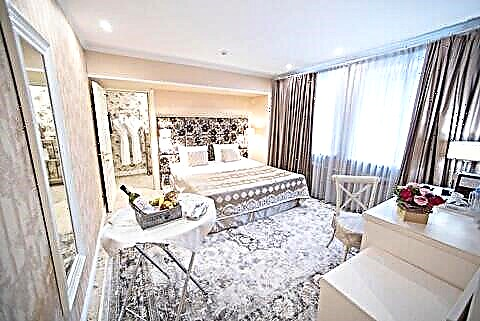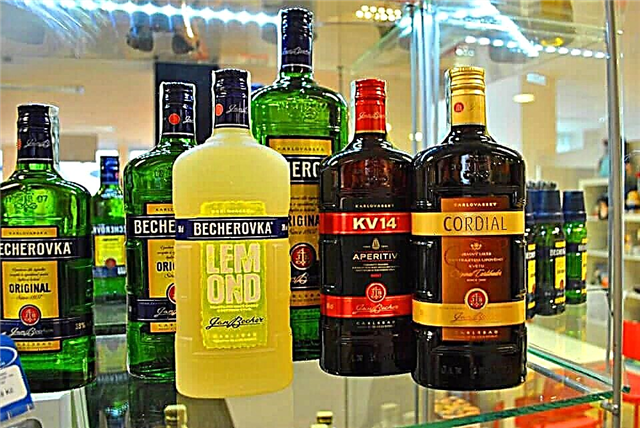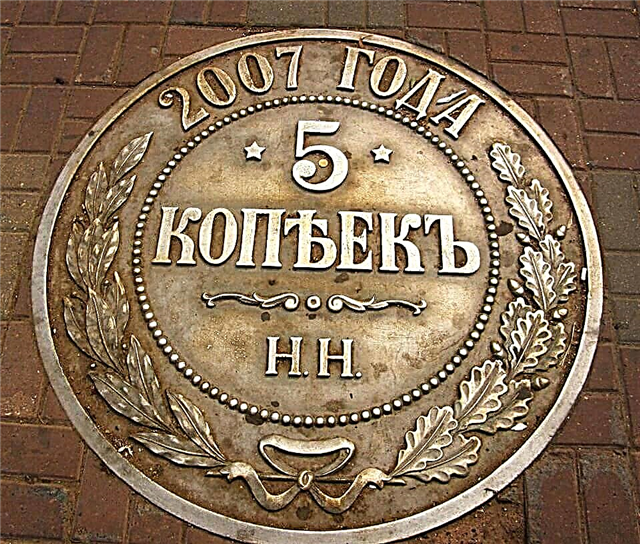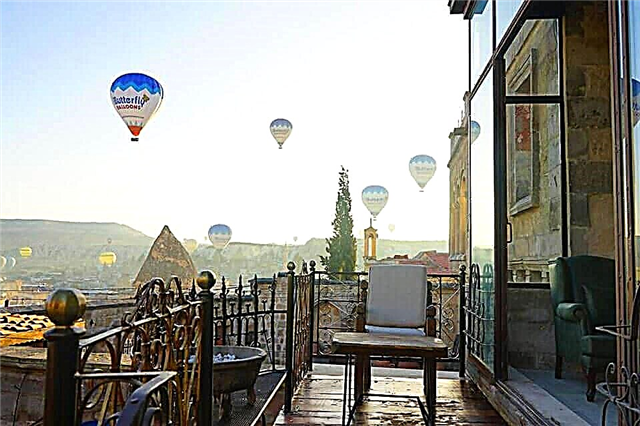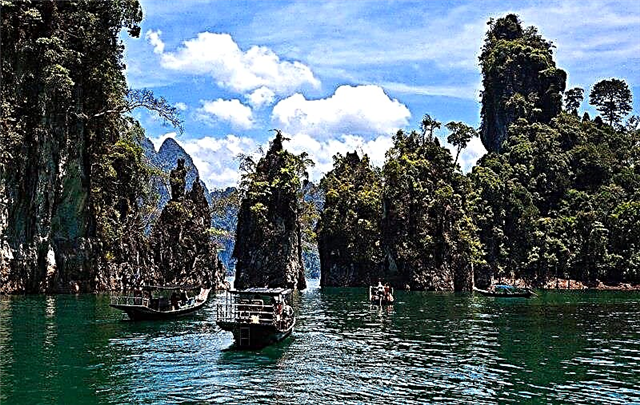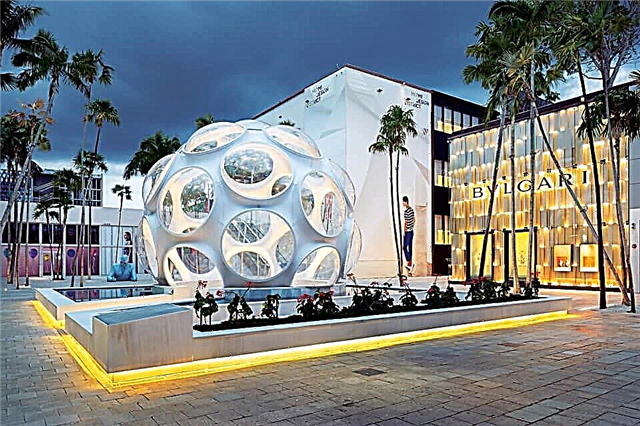Many people associate Miami with a fashionable seaside resort: the ocean, yachts, rappers hung with gold and accompanying models, expensive hotels and restaurants with a strict dress code. In many respects, this is true, but rest here is available not only to the rich, the average tourist can also spend a full-fledged vacation here. Moreover, you are guaranteed to discover the capital of Florida from a new perspective, because there really is a lot to see. The following list of the main attractions in Miami is divided into groups for ease of navigation.
Zoo

The zoo (Zoo Miami) was opened in 1980 and covers an area of 300 hectares. It is located in the suburbs, half an hour from the city. The total length of the route through the park is as much as five kilometers. It is not necessary to walk all the way on your feet, you can rent bicycles or strollers for the whole family, or ride a road train. The zoo is divided into four zones inhabited by animals and showing vegetation adapted to the flora and fauna of the corresponding part of the world - Asia, Australia, Amazon, Africa.
You can have a picnic in nature, you can feed giraffes, watch numerous shows. Of course, the infrastructure includes cafes, playgrounds and a petting zoo, attractions and camel riding. The zoo is open from 10 am to 5 pm daily.
Oceanarium

Oceanarium (Miami Seaquarium) at the time of its opening in 1955 was the largest in the world. And now it is easy to spend a whole day here, attending exciting shows, observing marine life. Dolphins, killer whales, sharks, manatees, turtles, seals, alligators and stingrays - whoever is not here. The main star of the aquarium is the dolphin Flipper, the hero of the series of the same name, he has a separate show. Also, every day, killer whales, fur seals, dolphins perform at one of the sites of the sequarium.
For a fee, you can feed or swim with dolphins, seals, chat with penguins. The Oceanarium takes an active part in the rescue of endangered species of animals. The aquarium is open daily from 10 am to 6 pm. The Summer Savings Pass program allows you to purchase tickets to the Zoo, Lion Safari, Sequarium and Science Museum.
Children's Museum

The Miami Children’s Museum is a must-see for young travelers. Both permanent and temporary exhibitions are located on a huge territory. Here children can learn various professions, feel like bankers, firefighters, underwater explorers, scientists or police officers. Any creative ideas will also find their embodiment. The street has a huge playground for children of all ages. And what about a cruise ship almost life-size, a two-story castle of dreams and a climbing wall 10 meters high!
The concept of the museum is learning through play: without noticing it, children learn a lot of new and interesting things. And of course, here you can eat and relax, and buy souvenirs as a keepsake. Tickets cost $ 20, children under one year old visit the museum for free. The museum is open daily from 10 am to 6 pm.
We recommend:
- Red Roof Inn PLUS + Miami Airport 2 * - located near the airport (free transfer is provided) and the cruise port. There is a swimming pool.
- Rodeway Inn South Miami - Coral Gables South Miami 3 * - just 8 minutes to The Shops at Sunset Place. Continental breakfast included.
- Wingate by Wyndham Miami Airport 3 * - it offers 2 bars, a fitness center. Free parking is provided.
Jungle Island Amusement Park

Jungle Island amusement park is a small, by American standards, zoo, the main focus of which is focused on representatives of felines - tigers, lions, and their unusual hybrids. Other animals are also not far behind in trying to impress visitors. Interesting performances take place on three sites of the park (Jungle Theater, Parrot Amphitheater and Serpentarium) - a parrot show, a Tiger's Tale, Winged Wonders, and Attractive and Creeping Lifestyle.
You can visit the lemur room and get to know the sociable monkeys. There is also a petting zoo, and even a beach with children's slides. Opening hours from 10 am to 5 pm daily.
Lion Safari Park

Lion Country Safari Park compares favorably with zoos in that animals can be viewed here in their natural habitat. The flora and fauna of the African continent have been recreated on the territory of the park. Visitors can navigate the park both on foot and by car along specially designed routes. As the name suggests, the park was originally created to protect the population of African lions, but now there are enough other animals - zebras, antelopes, tigers, giraffes, rhinos, reptiles.
The feeling of being so close to wild animals is pretty strong. In addition to the safari itself, you can ride boats, a Ferris wheel, visit the water park - the day will fly by. The safari runs daily from 9.30 am to 5.30 pm.
Perez Art Museum

The Perez Art Museum Miami opened back in 1954, but with the move in 2013 to a new building and a change of name (the previous names were the Center for Fine Arts of Perez, Museum of Art) found a second wind. The main exhibit of the museum is not jokingly called the building itself. The architects did their best - the three-story building located on the shore of the bay is raised above the ground, its veranda extends beyond the museum and multi-level gardens are arranged on it.
Inside, guests will find rich collections of contemporary and 20th century art: paintings, sculptures, photographs, leather goods, mosaics and metal, innovative geometric color paintings and installations made from natural materials. The museum hosts educational events and conferences, and the veranda hosts celebrations and business meetings.
The museum is open to the public from 10 am to 6 pm (Thursday to 9.30 pm), except Wednesday.
Frost Museum of Art

The Frost Museum of Art introduces its guests to American (including Latin America) art of the 20th century. More than 6,000 canvases, prints, sculptures, photographs are collected here. In addition to American art, the collection includes Japanese netsuke, bronze figurines of Asian and African cultures, and some items of the pre-Columbian era. The collection of the museum is constantly updated with new acquisitions and donations. The museum is named after the patrons of art Philip and Patricia Frost, who have invested large sums in the development of the art gallery.
The entrance to the museum is free. Opening hours: Tuesday to Saturday from 10 am to 5 pm, Sunday from 12 pm to 5 pm.
Philip and Patricia Frost Science Museum

The Philipp and Patricia Frost Museum of Science examines how technology affects the development of the world. On the territory of one museum there is a planetarium, an observatory, an aquarium, a terrarium and a zoo with birds of prey. There are observation decks and a city garden on the roof. Here you can delve into both the peculiarities of the structure of DNA and the latest astronomical achievements.
The museum is a branch of the Smithsonian Institution and employs researchers to make your visit even more fun. Needless to say, all the exhibits are interactive, visitors can feel certain physical phenomena on their own. And the planetarium's laser show is one of the most impressive in the world.
Museum opening hours: daily from 9.30 am to 6 pm, Saturday to 8.30 pm.
Miami Beach

Miami Beach is a famous seaside resort, in fact, it is a suburb of the city of Miami itself.Although for the average tourist, Miami Beach is the capital of Florida. It is snow-white sand, fashionable hotels and restaurants, beautiful people in expensive cars, in general, luxury and glamor. Miami Beach is located across Biscayne Bay, and is divided into several areas. The central part is business, its center is Collins Avenue.
The southern part is partying, its heart is Ocean Drive. The most beautiful (and, attention, free!) Beaches are located here. There is also a historical and architectural district - a whole block of Art Deco houses built in the 1920s (Art Deco District) is an open-air museum. Everyone can find something to do here, it's not for nothing that tourists from all over the world flock here.
Wynwood Art District

Wynwood Art District - the idea of giving new life to abandoned premises, giving them to representatives of creative professions, is not new and is still popular all over the world. The Wynwood area was not a prosperous one. Here, in abandoned warehouses, settlers from Puerto Rico lived. That all changed when the neighborhood was taken over by street artists. Now it is a street art center, one of the city's main attractions, and simply impressive graffiti by first-class artists.
In addition to the painted walls, there are museums, a huge number of art galleries, fairs and festivals. In the art districts, unlike the luxury Design District, an atmosphere of creativity and freedom of expression reigns. To experience it to its fullest, visit Wynwood on the second Saturday of the month when the Art Walk Festival takes place.
District Design District

Design District - As the name suggests, this place is associated with shops and shopping. But not with the usual ones - you should go to the Design District for brands and brands, because it is here that the most expensive and high-profile stores and showrooms of world designers are located. The audience here is going to be appropriate - bohemians and heirs of fortunes. But this does not mean that the design area should be bypassed, not being ready to shell out a lump sum. It’s interesting to just walk in the Design District and look at interesting sculptures and fountains. And if you come here on the second Saturday of the month, you can take part in the Festival Night of Festivities.
This is free admission to all galleries, street musicians, drinks, fairs and just a pleasant walk in the open air. For walks, you can come here at any time, but if you want to go shopping, they work from 11 to 20 hours from Monday to Saturday, and from 12 to 18 hours on Sunday.
Lincoln road

Lincoln Road Mall - if we continue the shopping topic, then we cannot fail to mention the Lincoln Road shopping mall. Although it can be called a shopping center rather conditionally - these are as many as 7 pedestrian areas, entirely consisting of shops, cafes and restaurants, beauty salons. Unlike Design District, brands are represented here - from democratic to expensive, so you won't be able to leave without shopping. The idea of creating a shopping street belongs to businessman Karl Fischer, by analogy with Rodeo Drive in Los Angeles and New York's Fifth Avenue.
Lincoln Road quickly became the largest shopping street in the United States. Needless to say, in addition to shopping, here is a great time with a cup of coffee or lunch, a spa treatment, or even a movie theater. Shops on Lincoln Road are open daily from 10 am to 11 pm.
Ocean Drive

Ocean Drive stretches for 25 kilometers along the ocean and is the center of the party life in the capital of Florida, although it is located in the center of the suburb - Miami Beach. People come here to show themselves and look at others. The beautiful palm trees that stretch along Ocean Drive add color.
In the morning, the promenade is occupied by sports boys and girls who go jogging, or ride bicycles, rollerblades, skateboards. In the evening, numerous clubs and cafes open their doors for incendiary parties. Slowly passing cars tend to outperform each other in price and rarity, and their drivers - by the presence of beautiful companions. It is always noisy, fun, incendiary here. Without visiting Ocean Drive, the impression of the city will be incomplete.
Little Havana District

The Little Havana district owes its name to Cuban immigrants who fled repression in their homeland, but took a piece of it with them to the United States. Now the area is inhabited by people from all over South America, but the Cuban flavor still prevails. Everywhere you can hear Spanish speech, there are rocking chairs near the doors of small plastered houses with thatched roofs, old people emotionally "cut" into dominoes. The smells are also not local - they smell like Cuban cigars, national food and pastries. The area has everything for a comfortable life - its own park, theater, museums and stadium.
The restaurants serve ethnic food, while the coffee shops serve real Cuban coffee. Of course, they dance salsa and rumba. And in order to completely stun a visiting tourist - adherents of Santeria (Afro-Cuban religion) bring chicken bones to the roots of the ceiba tree on the Cuban Memorial Boulevard. Residents of the area are friendly, prices are lower than in other areas - a day spent here will be remembered for a long time.
Freedom Tower

The Freedom Tower is another attraction associated with Cuba. The 14-story building was built back in 1925 as the headquarters of the Miami News newspaper. In the late 1960s, the newspaper moved, and the Cuban refugee registration office was housed in a building with a lighthouse on the dome. Then the tower got its name - a kind of symbol of freedom for emigrants who fled from persecution. The building now houses the Museum of Cuban Emigration and the Miami Dade College Art Library.
If the museum's exposition is mainly focused on the hardships of the Cuban people, then getting to the library is worth at least in order to examine the wooden interiors of the early 20th century. The building looks also very curious and combines elements of American Art Nouveau and Spanish decor. The night illumination is impressive - the lighthouse located on the dome beautifully illuminates Biscayne Bay. The museum is open from Tuesday to Friday from 12 to 17 hours, admission is free. Information about the events held in the tower should be checked on the official website.
Villa Vizcaya

Villa Vizcaya (Vizcaya Museum and Gardens) is a luxurious Renaissance mansion right on the shores of Biscayne Bay. The villa was built in 1916 for the wealthy industrialist Deering in a very aesthetically pleasing location - it offers stunning sea views, and the villa itself is not visible due to the surrounding forests. However, this arrangement contributes to the heavy damage that hurricanes inflict on the villa. In addition to the building itself, a beautiful landscaped garden is laid out on the adjacent territory, teeming with pools, gazebos and canals, interesting sculptures and a variety of plants and flowers.
The interior of the villa matches its external splendor - Deering himself brought from Europe many luxury items, furniture, paintings and sculptures of the 15-19th centuries. The villa now houses the Dade Museum of Art and is open to the public. The mansion also serves as a reception hall for high-ranking delegations, wedding celebrations are held here and films are often shot. The villa is open from 9.30 am to 4.30 pm daily.
Miami-Dade County Courthouse

The building of the Miami-Dade County Courthouse, when erected in 1928, was the tallest in the city - and with its 28 floors and 110 meters in height, it left the Freedom Tower below. For the residents of the 21st century, accustomed to skyscrapers became and glass, such buildings - tall, but erected in the neoclassical style - seem very unusual, as if houses built for giants. Due to geodetic flaws, during the construction of the building, it turned out that it goes into the ground.The problem was solved, but the basements of the skyscraper had to be filled with cement on a significant part.
The building still serves its purpose and houses a civil court. Previously, a prison was located on the upper floors of a skyscraper, but enterprising prisoners have proved more than once that escaping from a skyscraper does not cause any particular difficulties, so the place of imprisonment from the skyscraper was moved. You can visit the building free of charge from Monday to Friday, opening hours are from 9 to 16 hours.
Coral castle

Coral Castle is another amazing place, visiting which a tourist experiences a range of feelings - curiosity, surprise and a little sadness, because it is a monument of unrequited love. At the beginning of the 20th century, an unremarkable Latvian youth, Edward Lidskalnin, was rejected by his bride two days before the wedding. The unfortunate man went to America and devoted his whole life to building a castle for his beloved. He built the castle at night, from multi-ton blocks of coral limestone - megaliths. No one knows how stones with a total weight of more than 1000 tons were carried by one feeble builder. No mortar was used in the construction of the castle.
Now the Coral Castle is a kind of giant's dwelling - walls, gates, huge chairs and a table, decorative elements are made of megaliths. On the territory of the castle there is a tower in which the author himself lived, built of 2.5 meter boulders. There was no happy ending in the love story - the architect died alone on a stone bed - and the mystery of the construction of the monumental structure has not yet been solved. Opening hours of the castle: Sunday - Thursday from 9 am to 6 pm, Friday - Saturday from 9 am to 7 pm.
Gianni Versace's mansion

The mansion of Gianni Versace (Versace Mansion) is located on Ocean Drive and will definitely attract the attention of a tourist at least by a pilgrimage to the main staircase of the mansion, on which the famous fashion designer was shot. But, of course, the mansion is remarkable not only for this sad incident. Built in 1930 by the heir to the oil tycoon Alden Freeman, the house combines Renaissance architecture with the Alcazar de Colon Dominican palace. After purchasing it by Gianni Versace, the latter spent a fabulous fortune on the decoration and interior design of the villa.
There are legends about the decoration of the mansion, which is only the pool lined with gold mosaic. Famous friends of the fashion designer - Cher, Elton John, Madonna stayed in the house. Now the building of the mansion is occupied by the restaurant and boutique hotel Villa Barton Gee for wealthy guests. In addition, you can get inside for an excursion by an organized group by prior arrangement.
American Airlines Arena

American Airlines Arena is a multifunctional sports complex and entertainment center for various kinds of events, concerts, football, hockey and basketball matches. The maximum capacity of the building is about 21 thousand spectators. It is the home court of the Miami Heat basketball team. It hosts concerts of world-class stars. The most significant sporting events include the 2000 World Wrestling Championship and the NBA Finals. For those wishing to attend a concert or sporting event - their schedule is contained on the arena's official website, tickets are recommended to be purchased in advance. The rights to the arena's name were purchased in 1998 by American Airlines for nearly $ 200 million.
Hard Rock Stadium

Hard Rock Stadium also hosts a variety of sporting events, from American football to hockey and lacrosse. It is the home arena of the Miami Dolphins football team. The Orange Bowl Junior Tennis Tournament is held at Hard Rock Stadium. As many as five times the stadium has hosted Super Bowl matches.
It is curious that the stadium changes names all the time, earning money from commercial advertising. The collection of previous titles includes Dolphins Stadium, Joe Robbie Stadium, Pro Play Park, Sun Life Stadium. The capacity of the stadium depends on the event being held, for a football match it is 65,000 seats. The structure is often used as a concert venue.
Barnakele Historical Park

The Barnacle Historic State Park is perfect for a walk and picnic in nature. On the territory of the park is the mansion of Ralph Munroe, a yacht designer and founder of Coconut Grove, where Barnakele is located. Thanks to the careful attitude to the nature of the owner of the estate, you can watch birds in the park, of which there are much more than in other parks. The Munroe House is a late 19th century one-story building on stilts and is the oldest home in Miami Dade. Its name comes from the English barnacle, which means "mollusk", whose shape resembles the octagonal central room of the house.
The entrance fee to the park is $ 2, children under 6 are free. The park is open from Wednesday to Monday from 9 am to 5 pm. Visiting the mansion is possible only in organized groups from Friday to Monday, or by appointment on Wednesday and Thursday. The park is closed on Tuesdays. A ticket to the mansion costs $ 3 for adults and $ 1 for children 6-12 years old.
Fairchild Tropical Botanical Garden

Fairchild Tropical Botanic Garden covers an area of 34 hectares and boasts an extensive collection of tropical plants, including palm trees, orchids, coral trees, rare flowers and plants. That only blooming amorphophallus is worth - the largest flower in the world, which blooms only 72 hours 3-4 times in a lifetime. In addition, on the territory of the botanical garden there is a waterfall, lakes, a whole water garden. You can drive through the garden with a tram tour. Visitors can also admire exotic butterflies as they feed.
The ride is called Wings of the Tropics and takes place in the Clinton family's greenhouse. The botanical garden was founded by R. Montgomery and named after his friend, Dr. Fairchild, thanks to whose travels the garden's collection was replenished with rare plant species, some of which were first introduced to the United States. Opening hours: daily from 9.30 am to 4.30 pm.
Everglades National Park

Everglades National Park has the status of an international biosphere reserve and covers an area of more than 6 thousand square kilometers. It is mostly pristine wilderness. The Everglades are home to over 2,000 species of various plants and many animals, some of which are endangered. The natural landscape is also very diverse - there are swamps, prairies, mangroves and cypress thickets. You can move around the territory by car, on foot, or by bicycle. Boat excursions are very common, since most of the park is located on the water.
There are a huge number of routes to visit, it all depends on the time available to the tourist and his personal preferences. The official website of the park offers routes depending on the season and the starting point of the trip. In the park, you can stay overnight or even take a vacation. The entrance to the territory is paid. The ticket is valid for 7 days. Annual membership passes can also be purchased. The park is always open, at any time of the year or day.
Pinecrest Gardens Park and Organic Market

Pinecrest Gardens Park and Organic Market is located in Pinecrest, a suburb of Miami Dade. Previously, the popular theme park Parrot Jungle was located on this site, but it was moved to Watson Island, and the botanical garden remained and pleases visitors with a well-groomed area and convenient infrastructure. In addition to walking along shady alleys and admiring plants and animals, including turtles, swans, lizards, herons, the park offers a lot of entertainment for children.This is a petting zoo, a play area with attractions and water activities Splash ’n Play, giant chess and checkers, fish feeding and performances in the local amphitheater.
On Sundays from 9 am to 2 pm there is an organic farmers' market where you can buy organic products of local producers - fruits, vegetables, tea, coffee, honey, spices. Opening hours of the park from 9 (10) to 17 (18) hours, depending on the time of year and day of the week.
International Airport

International Airport (Miami International Airport) is the first attraction visited by tourists arriving in the capital of Florida. This is the main air gate of the state, and it is from here that most of the flights from the United States to Latin America are made. The airport has three terminals: North, South and Central. There is a Skytrain route between them, and travelators operate inside the airport building, since the distances between the terminals can be up to a couple of kilometers.
Of course, the airport is well equipped and has all the necessary infrastructure for a traveler: cafes and restaurants, lounges, shops, ATMs, hotels. To get a taxi from the airport to the center, you will have to pay about $ 30. You can also get to the airport by metro (Miami International Airport station) or buses, which will take tourists to the center in 45 minutes, and, importantly, they run around the clock.
Sea port

The Sea Port of Miami is one of the largest in the United States. The full name of the port is Port Dante B. Fascell, it is located on Dodge Island, connected to the mainland not only by a motorway, but also by an underground tunnel, thanks to which you can get there without much traffic jams. Serves both cargo and passenger ships. There are as many as 8 passenger terminals in the port alone, which means that 8 cruise liners can simultaneously enter here, with 5,000 passengers on board each. The port size is generally amazing.
This is not surprising, because the main cargo traffic with the countries of Latin America is carried out through the sea gates. The port is also home to many international cruise lines. It is convenient to cruise around the Bahamas and the Caribbean from here. Even an ordinary walk around the port will bring a lot of impressions.
Club "Deuce"

Club Deuce - how not to mention the hot spots of the party capital of the United States. Miami has a myriad of bars, clubs and places to have a drink. But they all often replace each other, and the Deuce club has been operating since 1926. The institution is a typical dive bar (a place of dubious reputation, where the local public gathers in the evenings) and makes visitors nostalgic for the times when there were no dress codes, of all the entertainment in the bar, there was enough table for a pool and a jubox, and served as decorations neon lights above the captured bar. One way or another, a very motley audience comes here, there are even celebrities.
In a local setting, it's easy to feel like an 80s action hero. Happy hour, when you can treat yourself to two drinks for the price of one, lasts from 8 to 19 hours.
Memorial to the victims of the Holocaust

Holocaust Memorial - the saddest monument dedicated to the victims of the genocide of the Jewish people during World War II cannot be ignored. The Jewish community has had a significant impact on the development of Miami and this monument is a tribute to grief and a symbol of hope for a time of peace for all the peoples of the world.
The memorial consists of 11 areas: there is a memorial wall with names, and a pond with water lilies, personifying the souls of the victims, and the central sculpture of love and longing. A 10-meter hand stretches out into the sky, and the victims of genocide climb along it in terrible suffering. A visit to this monument leaves a heavy impression, and this is the purpose of such memorials - so that those living today remember the terrible suffering, so that they do not repeat the mistakes of their ancestors!
Visiting the memorial is free, the monument is open every day from 9 o'clock until sunset.
Old spanish monastery

The old Spanish Monastery amazes with its difficult fate. The monastery was built in Segovia at the beginning of the 12th century, it was originally called the Monastery of Our Lady of the Queen of Angels, then it was renamed the Monastery of St. Bernard Clevro. After the Spanish Civil War, the church building was used for storing grain. The building was acquired by the American tycoon Hirst and decided to move it to America. The monastery was dismantled stone by stone, transported to the United States, and collected only 25 years and $ 1.5 million later, since the numbered container was lost. Now assembled like a puzzle, the structure serves as a place for worship in Spanish and English, weddings and pilgrimage of parishioners.
The monastery is open daily from 10 am to 4:30 pm.

